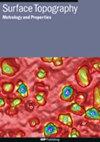进行相互比较,验证不同实验室对表面纹理分析算法的实施情况
IF 2
3区 材料科学
Q2 ENGINEERING, MECHANICAL
引用次数: 0
摘要
表面纹理是机械零件在任何接触情况下的重要特征。几十年来,对其特性进行量化一直是质量保证的一个成熟领域。随着全球化市场对精度和互换性的要求越来越高,表面分析的结果必须明确可靠。这就是国际标准化组织几何产品规格技术委员会更新其标准的原因。因此,仪器制造商和校准实验室需要确保其分析软件符合新的 ISO 标准。因此,为验证表面纹理分析软件,进行了一次相互比较。在过去二十年中,对表面纹理测量和分析方法进行了大量测试,包括仪器响应、离散化和量化等问题。本文研究了处理有限浮点精度离散值数据集作为输入的分析算法的数值和计算方面。文章解释了利用软件测量标准(软测量仪)测试纹理分析算法的方法以及测试任务的规格。并介绍和讨论了比较结果。本文章由计算机程序翻译,如有差异,请以英文原文为准。
Intercomparison to validate implementations of different laboratories of algorithms for the analysis of surface texture
The surface texture is an important feature of machine parts for any kind of contact. The quantification of its properties has been a well-established area in quality assurance for many decades. With the increasing demand for precision and interchangeability in the globalised marketplace, the results of surface analysis must be unambiguous and reliable. This is why the International Standardization's Technical Committee on Geometric Product Specification has updated its standards. Consequently, instrument manufacturers and calibration laboratories need to ensure that their analysis software complies with the new ISO standards. An intercomparison has therefore been carried out to validate surface texture analysis software. Over the past two decades, a number of tests have been conducted on surface texture measurement and analysis methods, including issues of instrument response, discretisation and quantisation. This article examines the numerical and computational aspects of analysis algorithms that process data sets of discrete values of finite floating-point precision as input. The method of testing texture analysis algorithms utilising software measurement standards (softgauges) and the specification of the test tasks are explained. The results of the comparison are presented and discussed.
求助全文
通过发布文献求助,成功后即可免费获取论文全文。
去求助
来源期刊

Surface Topography: Metrology and Properties
Materials Science-Materials Chemistry
CiteScore
4.10
自引率
22.20%
发文量
183
期刊介绍:
An international forum for academics, industrialists and engineers to publish the latest research in surface topography measurement and characterisation, instrumentation development and the properties of surfaces.
 求助内容:
求助内容: 应助结果提醒方式:
应助结果提醒方式:


